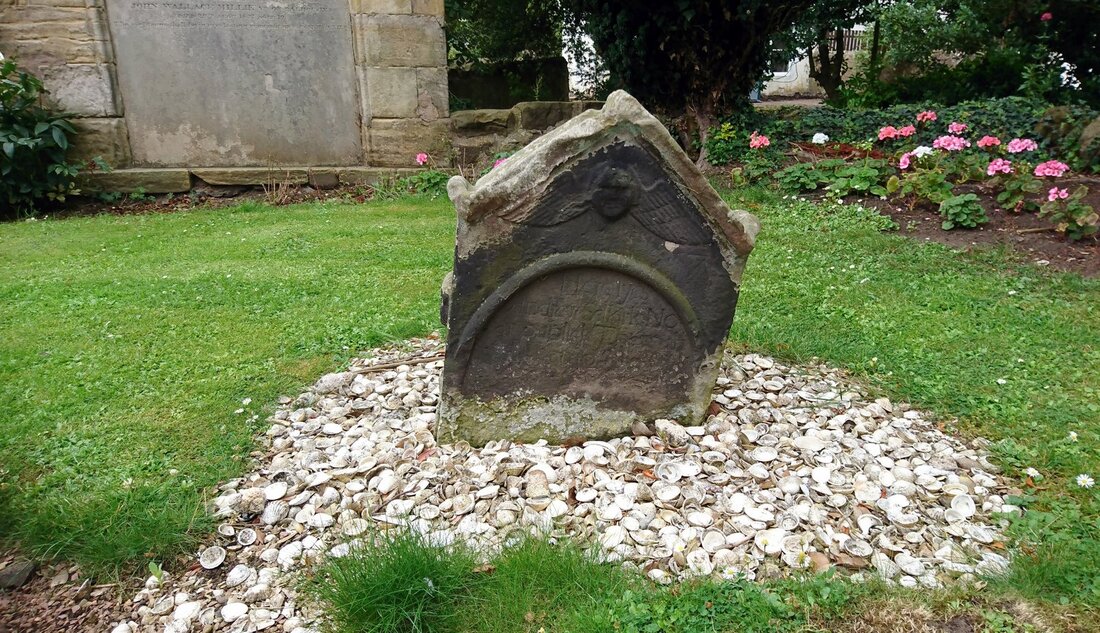In the northwest corner of Largo Kirk churchyard is the headstone shown in the photograph above. It appears again below in a black and white image which featured in the East Fife Mail in July 1976. The gravestone stands out because of the shells which are scattered around its base. The stone features a carved "winged soul" effigy (representing the flight of the soul from one realm to another). The date appears to be 1817 and the fading words begin: HERE LYES ANDREW SELKIRK NOTAR PUBLICK. Notar Publick was a public official who would witness the signing of important legal documents - see Dictionary of Scots Language entry - https://www.dsl.ac.uk/entry/snd/notar. This man must have been an important figure in the community.
The headstone is marked number 3 on the churchyard map below. It is in fact a double-sided headstone.
On the other side of this same headstone are the initials of the parents of the famous Largo-born inspiration for the character Robinson Crusoe, Alexander Selkirk:
JS (for John Selcraig) and EM for his wife Euphan Mackie
Selcraig is a variation of Selkirk. This side marks an earlier burial as the pair likely died at least a century before Andrew Selkirk. Their side of the stone is shown above (image from the book 'The Story of Largo Kirk' 1990 edition). The J looks like an I because J was not differentiated from the letter I until comparatively recent times. For example, John and James appeared as Iohn and Iames (see examples below). The exact relationship of the Andrew Selkirk on the reverse side of the stone to John Selcraig and Euphan Mackie is unclear - he could be 3 or 4 generations further down the family tree.
The stills below are from an episode of Weir’s Way filmed in Largo in 1985, showing Tom Weir visiting the grave of John Selcraig and Euphan Mackie while on the trail of the life story of their famous seventh son, Alexander, who was born 1676. As there is no memorial to Alexander Selkirk himself (he was buried at sea in 1721), over the years people have brought shells to the grave of his parents, acknowledging the family's connection to the sea and to pay tribute to the man who inspired the famous Crusoe story. Comparing the 1980s image below to the more recent one at the top of the post, the number of shells seems to have grown in recent years.








 RSS Feed
RSS Feed
